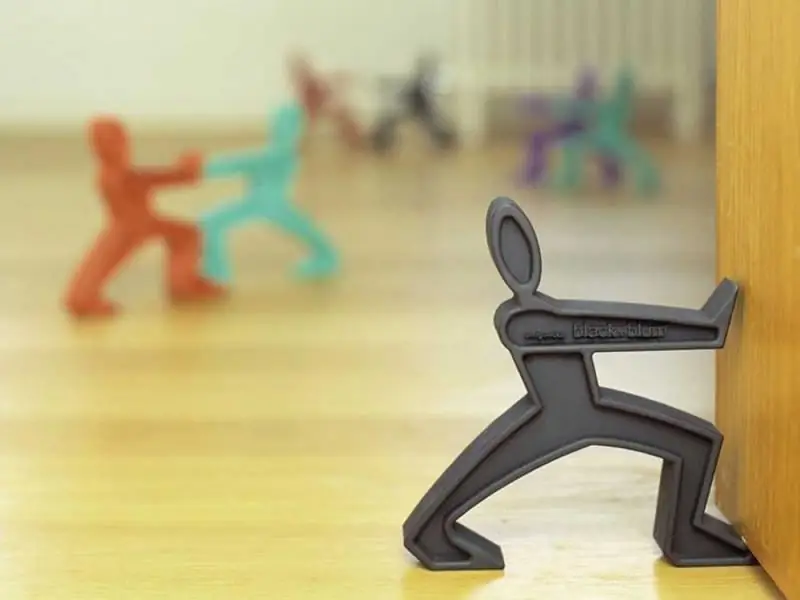
Table of contents:
- Author Bailey Albertson [email protected].
- Public 2023-12-17 12:53.
- Last modified 2025-01-23 12:41.
What are door stops and latches, features of their installation

Probably, every person has encountered a problem when the door leaf slams loudly. In addition, when you open the door from impacts against the wall, chips remain on it, which also do not decorate the room. To get rid of such problems once and for all, it is enough to buy and install a door stop. First you need to deal with the existing proposal, choose the type of limiter that is best suited in a particular case, and any home craftsman can install it with his own hands.
Content
- 1 What are door stops and latches for?
-
2 Types of door stops
- 2.1 Floor standing models
- 2.2 Wall-mounted models
- 2.3 Overhead devices
- 2.4 Vandal-proof restraints
- 2.5 Freely positioned stops
- 2.6 Magnetic or vacuum restraints
- 2.7 Ball clips
- 2.8 Video: types of door stops
-
3 Installing door openers
-
3.1 Fitting the floor restraint
3.1.1 Video: Installing the Floor Restraint
- 3.2 Installing the wall stop
-
- 4 Repair of door openers
- 5 Reviews
What are door stops and latches for?
If you often hear the knock of a door banging when opening a door in your house, a door stopper will help solve this problem once and for all. It is a device that protects doors, walls and nearby objects from chips and damage. This is a small detail, but it helps to significantly increase the service life of the door leaf, as well as protect the walls from damage if the door is opened carelessly. By installing such a device, you will be relieved of the need to frequently change the decoration of the wall next to the entrance.

Without installing a door stop, opening the door can damage the wall or adjacent furniture
The door stop allows you to set the maximum opening width of the door leaf or reduce the speed of its movement. Some models securely fix the door in a given position, making it impossible for it to open or close on its own. There is a fairly wide selection of such devices, which differ among themselves both in shape and design, and in appearance.
Types of door stops
Door stops differ:
- at the place of installation - they are floor, wall or overhead;
- according to the principle of operation - there are conventional, magnetic, vacuum and mechanical stops.
Since interior and entrance doors have different sizes and weights, the restraints for them are different. An ordinary person, faced with the problem of choosing such a device, may be confused by the choice available. To prevent this from happening, you need to navigate in the terms used:
-
stop - a device that limits the opening angle of the web, and sometimes fixes it when the end point is reached;

Door stop The stop allows you to fix the canvas in the desired position
-
bump stop - prevents the curtain from hitting the wall, furniture or other object on the way of opening the door;

Bump stop The bump stop prevents the door leaf from hitting the wall
-
stopper - designed to fix the door in a certain position;

Door stopper Stopper allows you to fix the door in the desired position
-
pad - does not allow the door to slam shut arbitrarily;

Overlay The cover does not allow the door to close arbitrarily
-
latch - fixes the canvas in the closed position. Some experts attribute such a device to locks, others to stops;

Latch The latch locks the doors in the closed position
-
closer - in addition to ensuring smooth closing of the door leaf, it also limits the angle of its opening.

Door closer The closer limits the swing angle of the door leaf and ensures its smooth closing
Floor models
Floor door stops are installed directly on the floor covering and are divided into two types by the type of their action:
- holding the door leaf in a given position;
- controlling the degree of door opening.
According to the installation method, such limiters are divided into:
-
Mobile or mobile. In specialized stores, such stops are presented in a wide range and can have a wide variety of designs: in the form of letters, toys, wedges, etc. Models that are worn on the lower edge of the door leaf have become widespread. Such limiters have an anti-slip coating, abut on both sides of the door and do not allow it to move in either direction.

Movable floor stop The mobile floor fence comes in a wide variety of shapes
-
Stationary. Such models are mounted on the floor in a specific place and are intended for permanent use. They can be of several types:
-
magnetic. When installed, a metal plate is mounted at the bottom of the door, and the limiter itself has a powerful magnet. After the door opens, it is magnetized to the stopper and securely fixed;

Magnetic floor stop The magnetic stop not only limits the opening of the web, but also fixes it in the extreme position
- ordinary. Such devices have a rubber pad, which, when the door leaf strikes, absorbs and prevents the leaf from opening further.
-
When choosing a place for mounting the floor stopper, one must take into account the fact that it should not interfere with free movement, otherwise it is easy to get a leg injury by hitting a fixture that is rigidly bolted to the floor.
Wall models
In those rooms where it is impossible or undesirable to fix the door stopper to the floor (expensive parquet, floor made of natural marble or other unique coating), wall models will be an excellent solution. Such devices are slightly more expensive than floor devices and are of several types:
-
in the form of a rod - represent a stop with a mounting platform and a rubber shock absorber mounted on a rod, the length of which can vary from 5 to 15 cm. Before buying a wall model, you need to decide on which wall you will mount it. There is no difference for a brick, but if it is made of drywall, then the size of the fastening part must be at least 10x10 cm. This will ensure reliable fastening of the stop, and the wall will not break from the impact;

Wall limiter A conventional wall stop is a stop with a mounting platform
- with a magnetic lock - they differ from the floor version only in the place of installation;
-
overlays. If you think that the stem wall shock absorber doesn't look very nice, you can fit a handle pad. It is located on the wall opposite the door handle and is usually attached to double-sided tape, so you don't have to drill the wall;

Cover under the handle To limit the opening of the door on the wall, a cover plate is often mounted under the handle.
-
with fixing the position of the door. In this case, the stopper is attached to the wall and the hook is attached to the door. When the door is opened, the hook is lifted and the blade is securely fixed in the open position. To close the door, such a latch must be unlocked manually.

Door hook After opening the door, the hook securely fixes it in the open position
Overhead devices
Over-door stops are installed directly on the door leaf, so walls and floors are not damaged. Fastening is done with glue or self-tapping screws.
-
The simplest is the tape stop. It is a durable tape, at the ends of which there are places for fixing it to the jamb and the canvas. In order for the tape stopper to serve for a long time, it is necessary to purchase models that have high strength and elasticity.

Tape stopper The tape limiter has special areas for attachment to the canvas and the jamb
-
For the front door, a folding stop would be an excellent option. During installation, the angle of the stop relative to the floor must be observed. The best option, when it is 45 o, at a lower angle, the mechanism may break down.

Folding stop The folding stop is activated by pressing the foot, and in the retracted position it snaps securely onto the clip
-
The retractable stop is made with a rod and a brake shoe. Its installation is carried out in a vertical position. You can also operate such a device with your foot, and in order to raise it, you will need to manually bend the side plate.

Retractable stop Raise the retractable stop with your hands
-
The sliding door stop allows you to fix the canvas at different points, their number depends on the number of cuts in the groove of the device. The rod is fixed to the canvas, and the device itself is installed on the door frame. Since this limiter is installed at the top of the door leaf, it does not interfere with the door operation.

Sliding limiter Sliding stop allows you to fix the web at several points
-
Soft pads. Protect the door from accidentally slamming. Their use allows you to protect children's hands from the possibility of being jammed by doors. To install such devices, you just need to put them on the door leaf.

Soft door trim Soft pads are installed on the door leaf and protect hands from accidentally getting into the space between the door and the jamb
Vandal-proof restraints
There are models of restraints that allow you to protect the house from illegal entry. The simplest options can simply make a loud sound when it comes into contact with the door leaf. More expensive models send an alarm signal to the security console or to a mobile phone.

Vandal-proof stopper helps protect your home from thieves
Freely positioned stops
This type of limiters can be both floor-mounted and over-the-door. Floor models are available in resin wedges or other suitable shapes. Over-the-door stops are put on the door leaf and are also made of soft materials. Freely spaced stops do not need to be locked to fit, so they can be used anywhere, anytime.

Freely positioned stops do not require fastening and can fix the door in any position
Magnetic or vacuum stops
A feature of the magnetic limiter is that it not only prevents the door from swinging open at an angle greater than the specified one, but also ensures its fixation in the open position. A metal plate is installed on the canvas, and a magnet is placed on the limiter itself. To fix doors of different weight, a magnet of the appropriate power must be chosen.
Instead of a magnet, a vacuum retainer can be used on these stops. In this case, a rubber suction cup is installed on the door, which repeats the shape of the limiter. When the door is opened, the suction cup is securely connected to the limiter and ensures that the door leaf is kept open.

Vacuum stop keeps the door open with a suction cup
Ball Locks
Ball devices are designed to fix the door in the closed position and prevent it from opening spontaneously. These are small devices, one part of which is mounted on the door leaf, and the other on the door frame. These models are usually used on interior doors that do not need long-term locking. Due to the presence of an internal spring, the ball reliably fixes the doors, and after pressing the canvas, even a child can open it.

The ball lock holds the door securely in a closed state, and it is not difficult to open it if necessary
Video: types of door stops
Installing door openers
Most often, floor or wall door stops are used, so we will consider the installation process using their example. To complete the work you will need:
- electric drill;
- screwdriver;
- pencil;
-
measuring instruments.

Door Stop Installation Tools You will need the simplest tools to install the door stop
Installing the floor stop
Consider installing a conventional metal floor door stop. It can have different shapes, for example, in the form of a pin or a hemisphere, as well as different heights.
Work on installing the floor limiter is performed in the following sequence:
-
Preparing tools and inspecting the complete set of the restrictor. Usually, the kit contains a screw and a dowel to fix the stop, but if they are not there, you need to prepare the fasteners separately.

Limiter complete set Checking the complete set of the door stop
- Site selection and markup. For the correct choice of the installation site, the door leaf must be opened so that it does not reach the wall or furniture by 3-5 cm. Do not forget to take into account the size of the door handle. The place for the stop is chosen approximately in the center of the door. Mark the installation location and check again if everything is done correctly.
-
Hole creation. Using a drill, make a hole in the floor and insert a dowel into it. For concrete paving, a hammer drill must be used.

Hole drilling A hole is made in the floor into which a plastic dowel is inserted
-
Installation of the limiter. Install the door stop and fix it with one or more self-tapping screws. If the stopper is in the form of a hemisphere, it must be turned so that the blade is firmly in contact with the rubber pad.

Installing the limiter Using a self-tapping screw, the limiter is fixed
It is recommended to periodically open it with varnish to keep the brass floor stop shine
Video: installing a floor stopper
Mounting the wall stopper
If you want the limiter not to interfere with free movement around the room, you can install it on the wall. Installation of wall-mounted models is carried out in the same sequence as for floor-standing versions. The only difference is that this device is mounted on a wall, not on the floor.
It is not recommended to install the wall stopper at the level of the hinges, since it is in this place that the load will be maximum, so they will fail faster
Repair of door openers
The peculiarity of door latches is that they have a simple design, so they have practically nothing to fail.
The main breakdowns of door stops will depend on the type of device:
- failure of the rubber pad. If the rubber pad is damaged on the floor or wall model of the limiter, then it must be replaced;
- weakening of the suction cup. If the suction cup is damaged in the vacuum limiter, then it will not provide reliable fixation of the blade and must be replaced;
- damage to the stop on over-door models is eliminated by replacing such a device;
- a weakening of the spring in the ball stop makes it unable to perform its function. Such a device must be replaced.
Reviews
Now you understand how useful and necessary thing is a door stop. Installing such a device with your own hands is not difficult. Despite its small size, the door stop reliably protects doors, walls and furniture from damage. In addition, you do not have to worry about a small child or pet being hurt while opening the door leaf.
Recommended:
Door Latch (latch): Varieties With Description And Characteristics, Pros And Cons, As Well As How To Properly Install On The Door
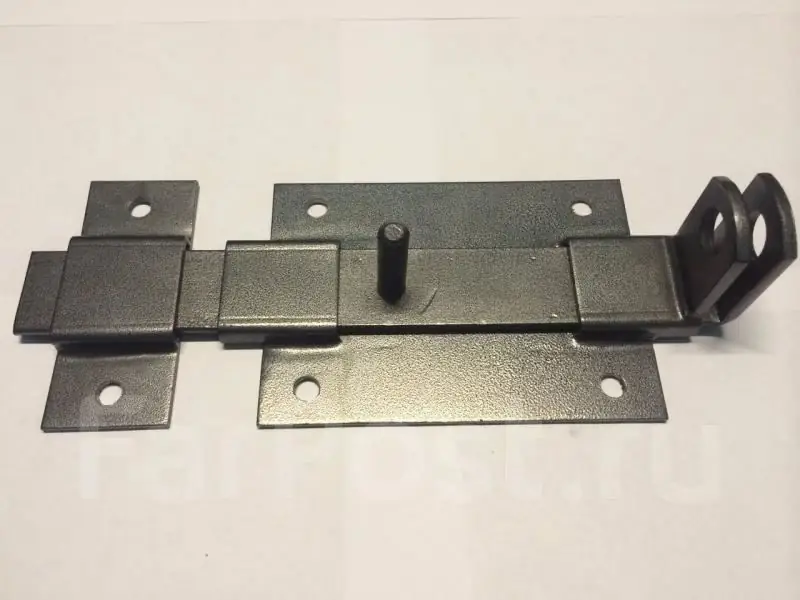
The purpose of the door latch. Principle of operation. Types of door valves. Installation of various types of valves. Features of installation on different types of doors
Door Handles: Varieties And Characteristics, Pros And Cons, And How To Install Correctly
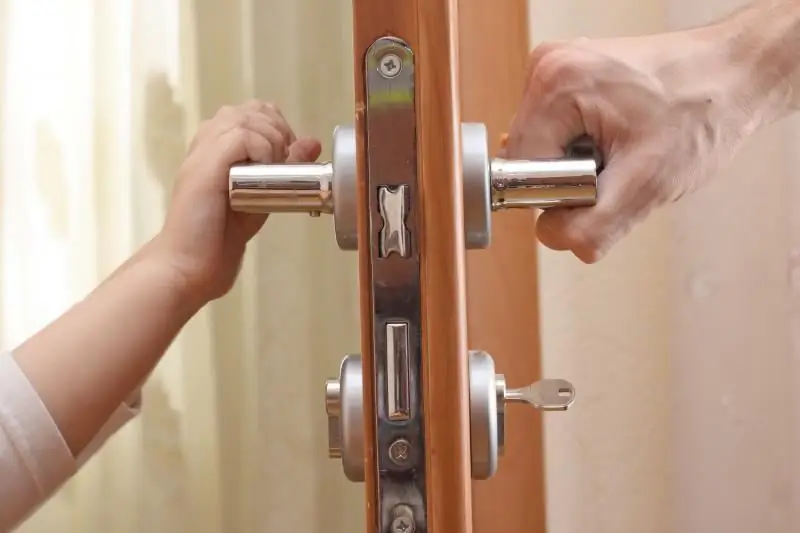
Purpose and design of door handles. Types of door handles, their pros and cons. Features of installation and repair of different types of door handles
Platbands On The Door: Varieties With A Description And Characteristics, Pros And Cons, And How To Install Correctly
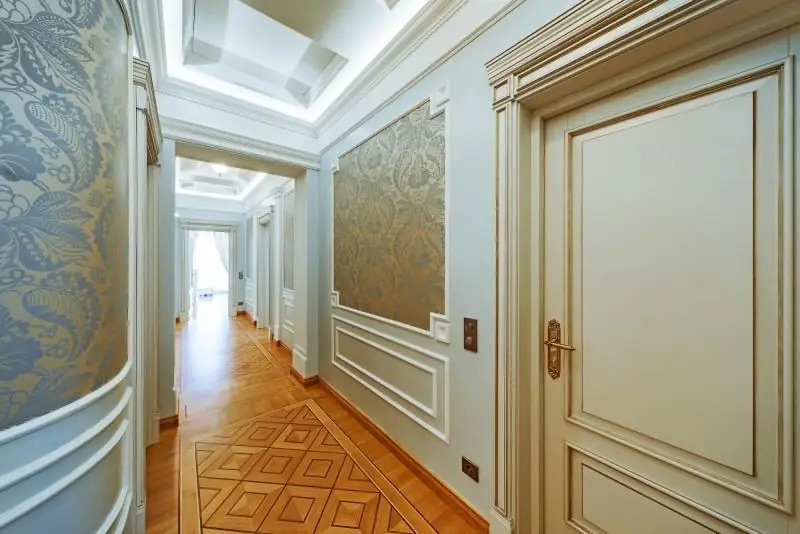
Why do we need door trims and how they can be beaten in the interior. How to do it yourself from wood, plywood and plaster. We study materials and make a choice
Door Latch: Varieties With A Description And Characteristics, Pros And Cons, As Well As How To Properly Install On The Door

Purpose of the door latch. Types of door latches, features of their device, advantages and disadvantages. The process of mounting and dismantling the door latch
Front Door Trim: Varieties With Description And Characteristics, Pros And Cons, And How To Install Correctly
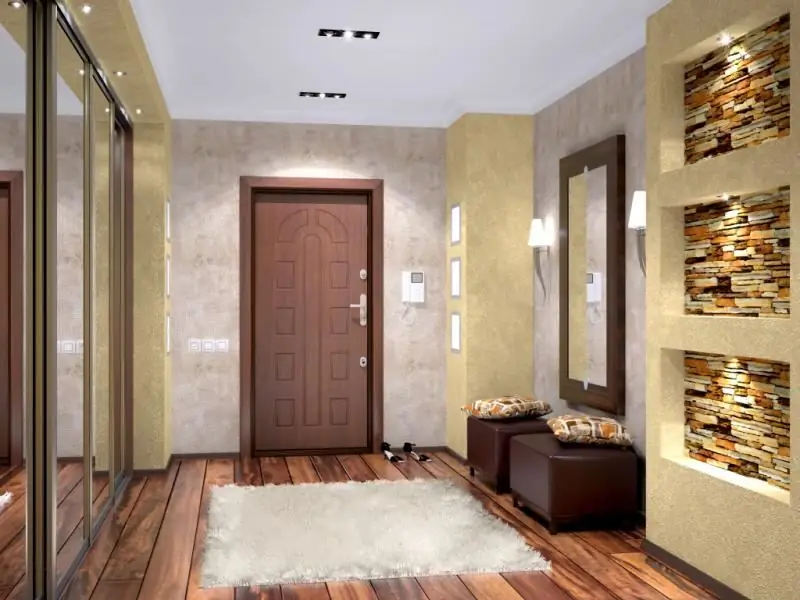
Appointment of overlays on the front door. Their description, features, advantages and disadvantages. Do-it-yourself technology for installing linings on front doors
